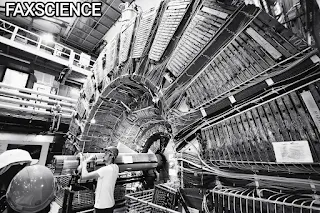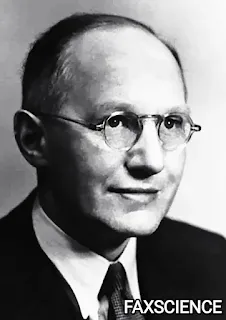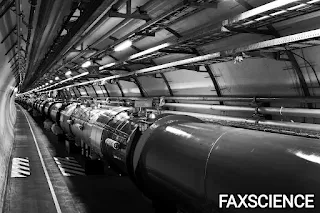Particle Accelerators
 |
| Particle Accelerator |
History
 |
| John Cockcroft |
 |
| Ernest Walton |
 |
| Dmitri Skobeltsyn |
How Particle Accelerators Works
Particle
accelerators work by using electric and magnetic fields to accelerate charged
particles, such as protons or electrons, to very high speeds. These particles
are then guided through a series of magnets that bend their path into a
circular or linear path, allowing them to be accelerated over and over again.
As the
particles travel through the accelerator, they are focused into tight beams and
made to collide with other particles or targets. These collisions allow
scientists to study the properties of the particles and their interactions with
other particles, providing insight into the fundamental nature of the universe.
The process of accelerating particles requires a significant amount of energy,
and accelerators are typically powered by large electrical circuits that generate
the necessary voltage and current. Superconducting magnets are also used to
create strong magnetic fields that guide the particles along their path. There
are many types of particle accelerators, including linear accelerators
(linacs), cyclotrons, synchrotrons, and storage rings. Each sort has
its claim preferences and drawbacks, depending on
the particular application.
Overall, particle accelerators have revolutionized our understanding of the
universe and have numerous practical applications in medicine, industry, and
energy production. They continue to inspire new technologies and innovations,
and promise to play a vital role in scientific research and technological
innovation in the years to come.
Types of particle accelerators
There are several types of
particle accelerators, including linear accelerators, circular accelerators,
synchrotrons, and colliders. Each type has its unique features and
applications.
- Linear
accelerators (linacs) use a series of accelerating structures
to increase the energy of particles in a straight line. Linacs are
commonly used in medical applications, such as radiation therapy for
cancer treatment.
- Circular
accelerators, such as cyclotrons and synchrotrons, use
magnetic fields to bend and focus the path of charged particles in a
circular orbit. These machines are used in a variety of applications, such
as in nuclear physics research, medical imaging, and material science.
- Synchrotrons are circular
accelerators that use a series of accelerating structures to increase the
energy of particles. The key feature of synchrotrons is their ability to
produce intense beams of light, such as X-rays, which are used in medical
imaging and material science.
- Colliders are circular accelerators
that collide beams of particles head-on, allowing scientists to study the
fundamental properties of matter and energy. The most powerful collider is
the Large Hadron Collider (LHC), which we will discuss in more detail
later.
Applications of particle accelerators
Particle accelerators have
numerous applications in medicine, industry, and scientific research. Here are
some examples:
- Medical applications: Particle accelerators
are used in radiation therapy for cancer treatment. High-energy particles
can be directed precisely at a tumour, killing cancerous cells while
minimizing damage to healthy tissue.
- Industrial applications: Particle accelerators
are used in material science research, where they can be used to analyse
the properties of materials at the atomic level. They are also used in the
production of semiconductors and other advanced materials.
- Scientific research: Particle accelerators are used in a variety of scientific research, such as in nuclear physics, particle physics, and astrophysics. Accelerators allow scientists to study the properties of particles and their interactions with other particles, providing insight into the fundamental nature of the universe. Energy production: Particle accelerators are being explored as a potential source of energy production through nuclear fusion, which could provide a clean and virtually limitless source of energy.
Large Hadron Collider (LHC)
The LHC is best known for
its part within the disclosure of the Higgs boson,
a molecule that gives mass to other particles within
the universe. The
discovery of the Higgs boson was a major breakthrough in particle physics and
confirmed the existence of the Higgs field, which is responsible for giving
mass to particles. The LHC is also used to study other fundamental particles,
such as W and Z bosons, top quarks, and the hypothetical particles predicted by
supersymmetry. The LHC has the potential to reveal new insights into the nature
of dark matter and dark energy, which make up most of the matter and energy in
the universe.
Future of particle accelerators
The future of particle
accelerators is exciting, with new technologies and innovations promising even
more powerful and efficient accelerators. One such technology is plasma wake
field acceleration, which uses a plasma wave to accelerate particles to high
energies over a much shorter distance than traditional accelerators.
There are also plans to build new colliders that will be even more powerful
than the LHC, such as the proposed Future Circular Collider (FCC) at CERN,
which would have a circumference of 100 kilometres and could accelerate
particles to energies of up to 100 TeV.
Impact on society
Particle accelerators have had a
significant impact on society, both through their scientific research and
practical applications. They have contributed to advances in medicine,
industry, and energy production, as well as our understanding of the
fundamental nature of the universe.
Particle accelerators have also inspired new technologies and innovations, such
as synchrotron light sources, which are used in material science research and
drug development. They have also stimulated international collaborations and
have helped to inspire the next generation of scientists and engineers.
Challenges in particle accelerator technology
Despite their many benefits, particle accelerators face several challenges and limitations. One major challenge is cost, as particle accelerators are expensive to build and maintain. They also require a significant amount of energy to operate, which can be a limiting factor in their use.Another challenge is safety, as high-energy particles can be dangerous if not properly contained. There is also the risk of radiation exposure for workers and the environment, which requires careful monitoring and safety procedures.
Conclusion
Particle accelerators are
remarkable machines that have revolutionized our understanding of the universe
and have numerous practical applications. They have a rich history, with many
scientists and engineers contributing to their development over the years. The
future of particle accelerators is promising, with new technologies and
innovations promising even more powerful and efficient machines. However,
particle accelerators also face challenges and limitations, which must be
carefully considered to ensure their safe and responsible use. Despite
these challenges, the benefits of particle accelerators are clear, and their
impact on society cannot be overstated. From advancing our understanding of the
universe to providing new medical treatments and energy sources, particle
accelerators have transformed our world in countless ways. As we look to the
future, it is clear that particle accelerators will continue to play a vital
role in scientific research and technological innovation. With new technologies
and collaborations on the horizon, we can expect even greater breakthroughs and
discoveries in the years to come.

